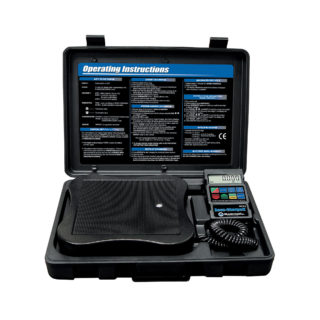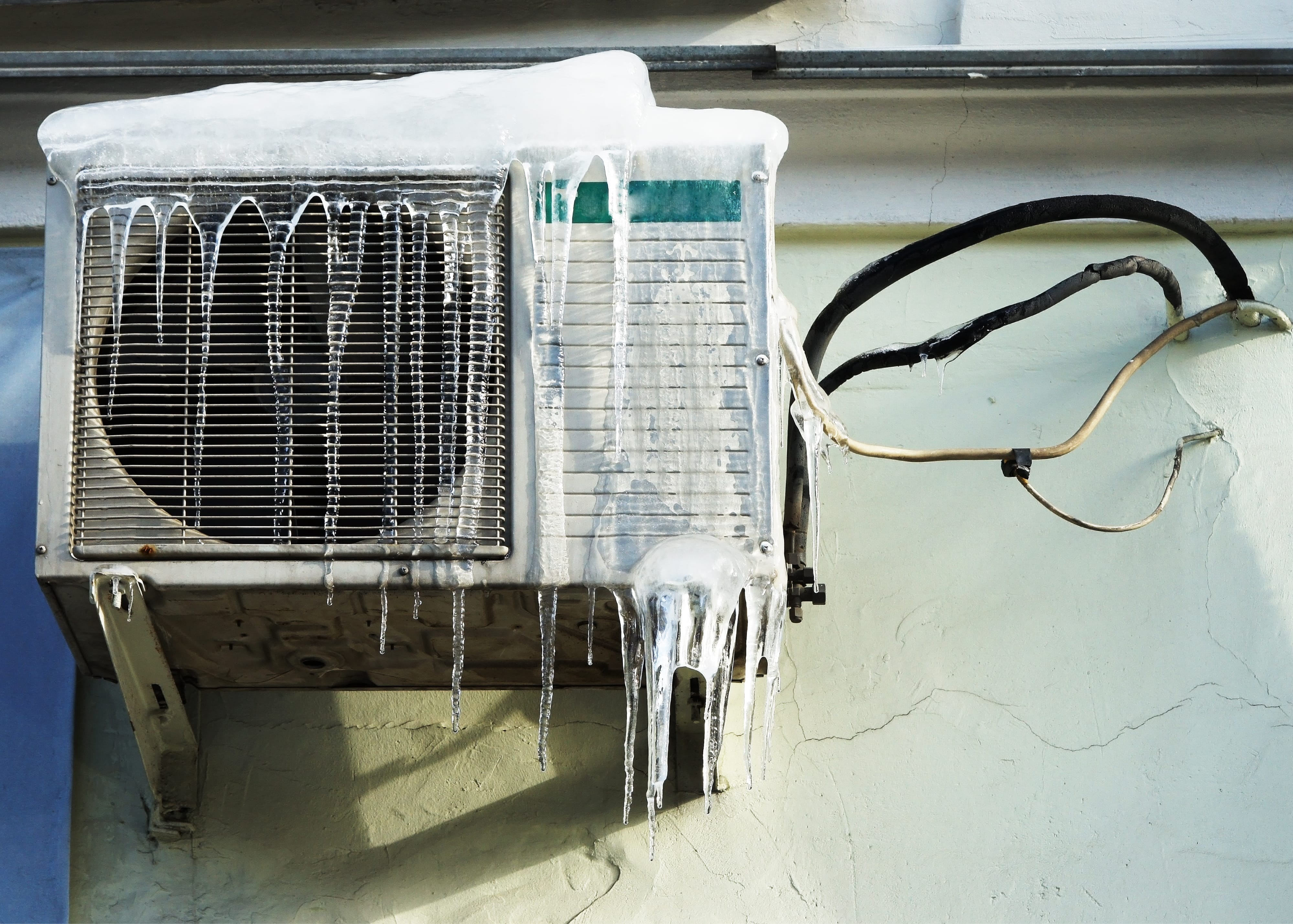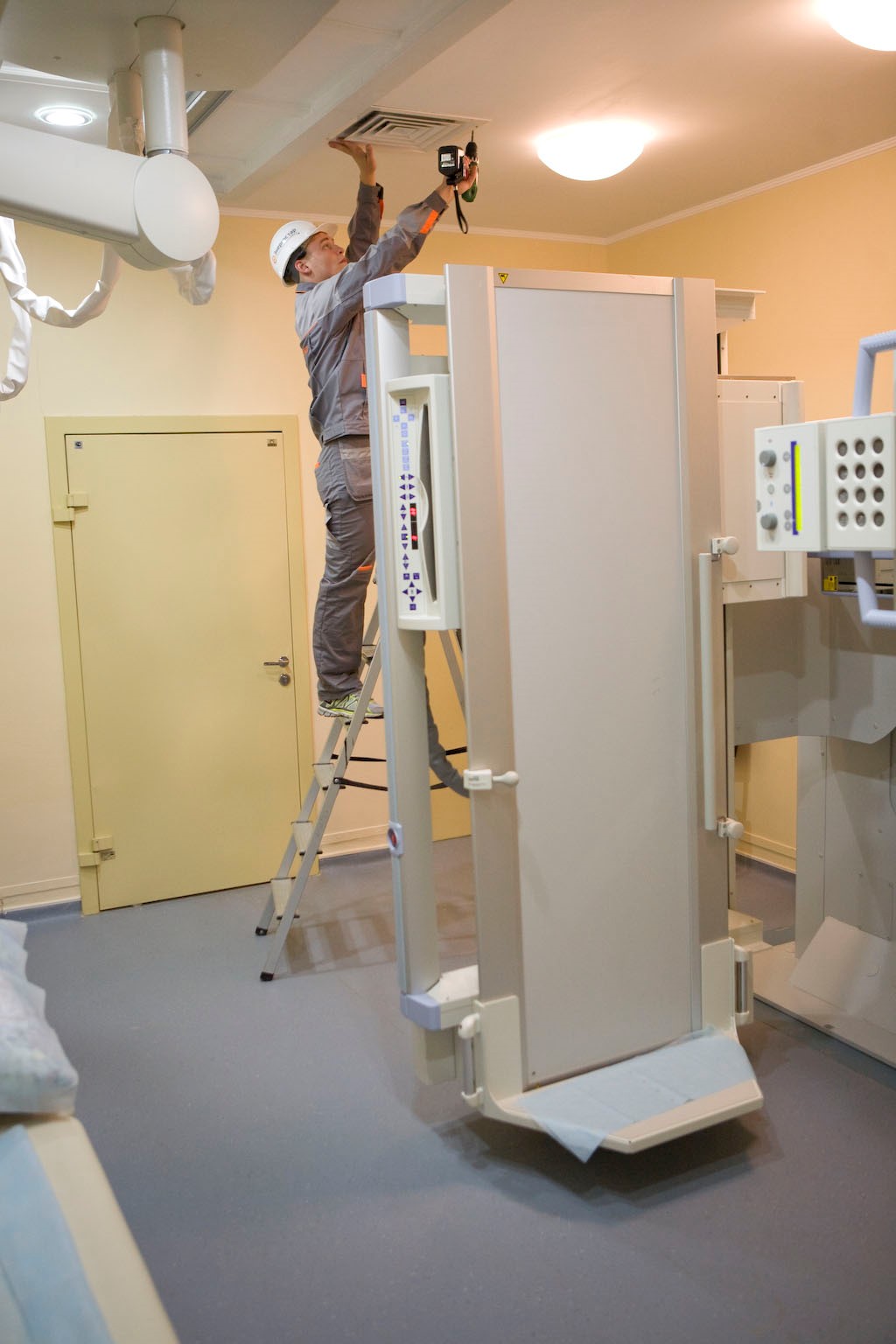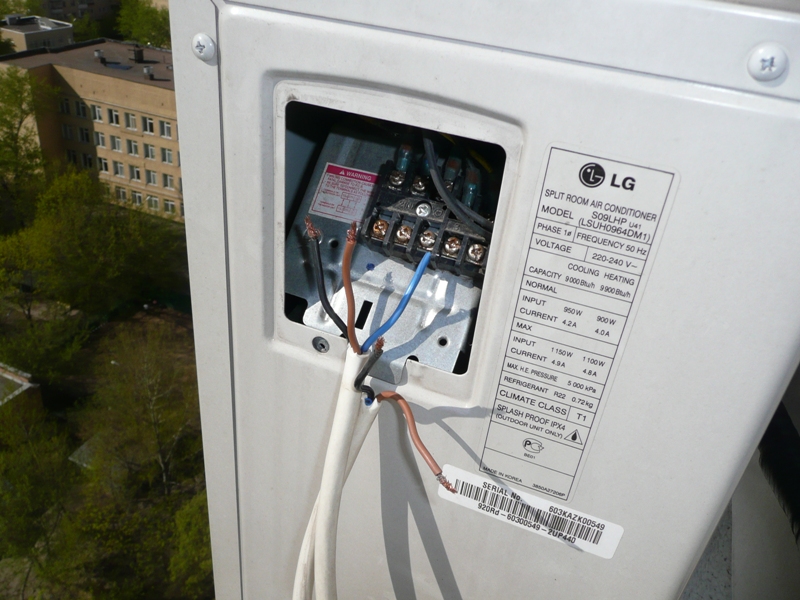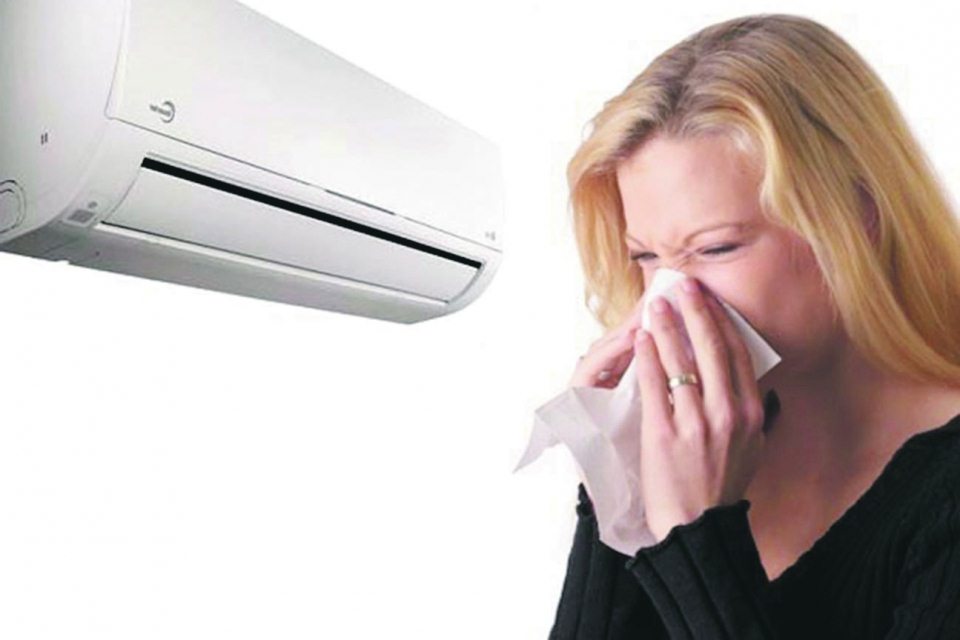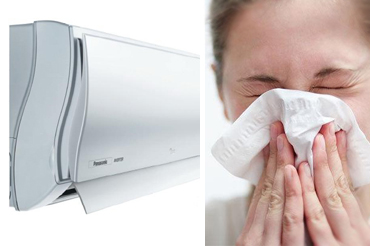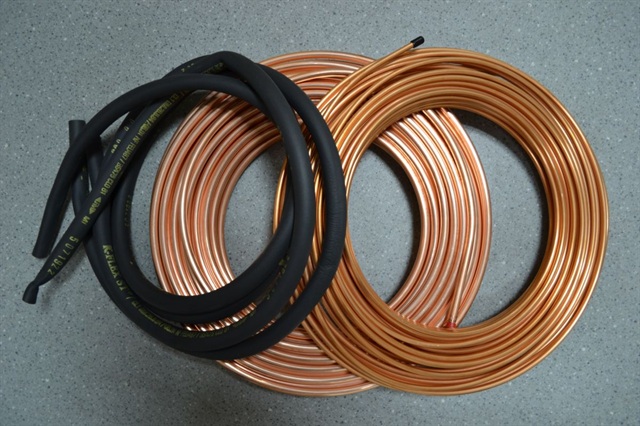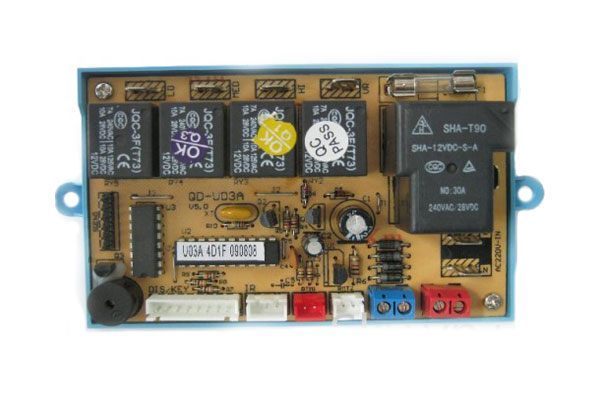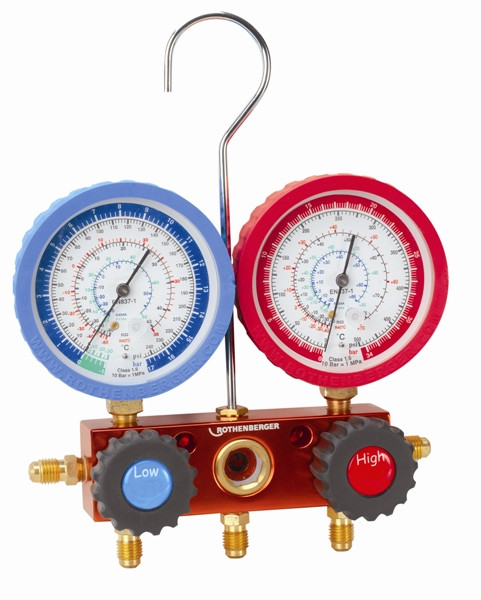Maintenance of household, industrial and automotive air conditioners involves refueling the system with freon. The frequency of the procedure is once every 1-2 years. In the event of an emergency refrigerant leak, recharging is performed after the problem has been eliminated. A special set of tools and equipment is used to fill the working circuit with freon. With it, you can perform the procedure yourself. Automatic filling stations are used for professional service.
Equipment for filling air conditioners
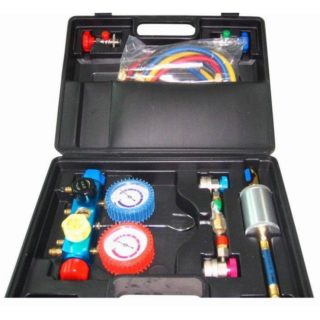
A set of equipment for refueling air conditioners allows you to save on payment for the services of a service representative and to do the work yourself. The manual station allows diagnostics of the split system and filling the circuit with refrigerant. Automatic and semi-automatic car air conditioner refueling machines are expensive and are used commercially. Household and semi-industrial climate systems are serviced using a standard portable kit. It includes:
- gauge manifold;
- Vacuum pump;
- filling hoses;
- adapters and adapters for R410 freon;
- ball valve;
- electronic balance.
The kit fits into a handy case; an instruction manual is attached to work with it.
HVAC equipment refueling tools
Air conditioners most often require not a full refueling, but replenishment of the leaked freon. Refueling is carried out in two ways: by pressure and by weight. The process will require special tools. Among them, a vacuum pump is expensive equipment, it is better to rent it for a one-time procedure. Information about their characteristics and purpose will help you choose the right tools.
Vacuum pump
Vacuuming the working circuit of the air conditioner allows you to get rid of air and moisture that has got into the system. Liquid droplets remaining inside the equipment cause rapid compressor wear. To work with climatic and refrigeration systems, a one and two-stage vacuum pump is used.
For household air conditioners with a short line length, a low-performance unit is suitable. Maintenance of industrial air conditioning units is carried out by powerful pumps with a high speed of air evacuation.
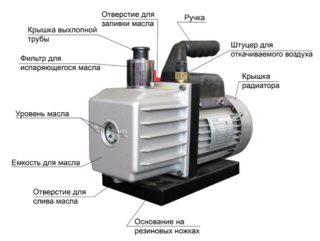
The equipment is divided into two groups: low and high vacuum models. Each type of pump is represented by devices of various designs.
Low vacuum:
- Rotary vane devices have a working chamber with a rotor and spring-loaded blades inside the body. As the mechanism rotates, air is compressed and pushed through the apparatus. The devices require oil filling, they regulate the residual pressure. Popular manufacturers: WIGAM (Italy), CPS (USA), VALUE (China).
- Liquid ring units are distinguished by the presence of liquid in the working chamber. They are easy to use and safe for the environment. Liquid ring pumps are equipped with one moving part - the impeller. The disadvantage of the installation is high energy costs.
- Two-rotor. In two-stage models, the rotors are installed in series to enhance the evacuation.
High vacuum:
- Diffuse - designed to work in an environment with foreign particles, resistant to voltage drops. Plus - high performance.
- Cryoadsorption - gas absorption occurs by freezing with liquid nitrogen. The disadvantage of the device is the use of synthetic oil that requires disposal.
- Heterionic creates a vacuum without traces of impurities. Efficient equipment is rarely used due to its high cost.
The main guideline when choosing a vacuum pump is the parameters of the split system. Significant characteristics of the unit:
- Residual pressure - determines the quality of vacuum, the lower the indicator, the better the system is cleaned.
- Engine power - the characteristic affects the duration of uninterrupted operation.
- Unit performance - the amount of air removed. Depending on the model, the parameter is 42-273 l / min.
Additional selection criteria: device weight, oil indication, noise level, operating conditions.
Leak detector
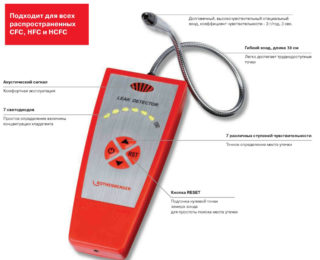
A refrigerant leak in the air conditioning system results in a decrease in cooling capacity. A portable freon leak detector is used to find the problem. The electronic device is capable of detecting small losses of the order of 4-5 g / year. It consists of an ergonomic housing with a display and a flexible probe with a sensor. The location of the leak is indicated by an acoustic and LED signal. Disadvantages of an electronic leak detector:
- poor performance in windy weather;
- high price.
Gauge manifold
The gauge station is designed to control the pressure inside the working circuit of the climate system. With the help of hoses, the device is connected to a vacuum pump, a freon cylinder and an air conditioner. The gauges are manufactured in two colors: blue - measures the pressure on the suction side (low), red - the discharge (high). The instrument cases are made of aluminum. The pressure gauge is equipped with a pressure and boiling scale. The parameters differ for each brand of refrigerant, the type of freon is indicated near the marking.
An analog gauge station is recommended for domestic use, industrial equipment is serviced using electronic collectors with 60 freons in memory.
Electronic balance
Special electronic scales for charging the climate system are highly accurate, programmed for the weight of the loaded or poured refrigerant. When the set value is reached, an audible alert sounds. Designed for weight from 0 to 100 kg. The scale consists of a platform and a control panel. Used to work with any kind of freon. The error of the device is 5 g per 100 kg. Using electronic scales, measure the amount of freon specified in the documentation.
Hex keys
A set of tools for refueling split systems will be incomplete without the hex keys required to unscrew the service fittings and launch the freon into the system.
Freon

Several brands of freon are used in air conditioners: r22, R410a, R407c. The type of refrigerant used is indicated on the unit documents and on the type plate on the back of the units. Freon r22 was the most widespread, but in modern climatic systems it was replaced by freons without chlorine content. Refrigerants R407 and R22 are similar in their properties. The same equipment can be used to charge the system. Freon R410a is characterized by high pressure in the working circuit (26 atmospheres, versus 16 for r22). Special adapters and hoses are required.
The refrigerant charge is indicated by the manufacturer.

